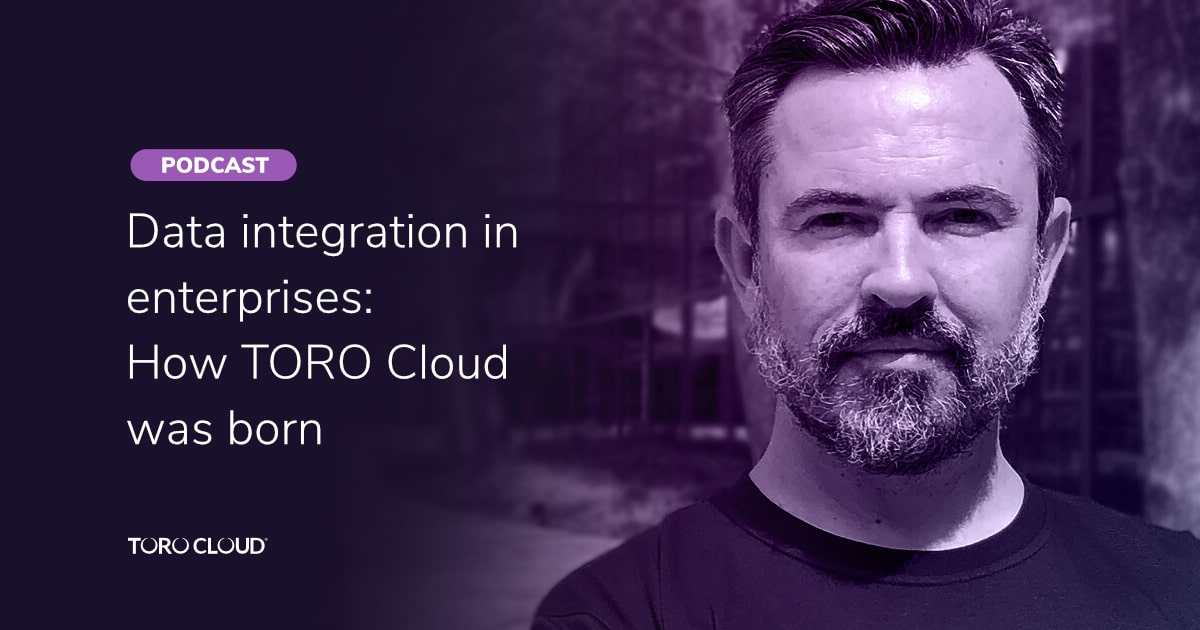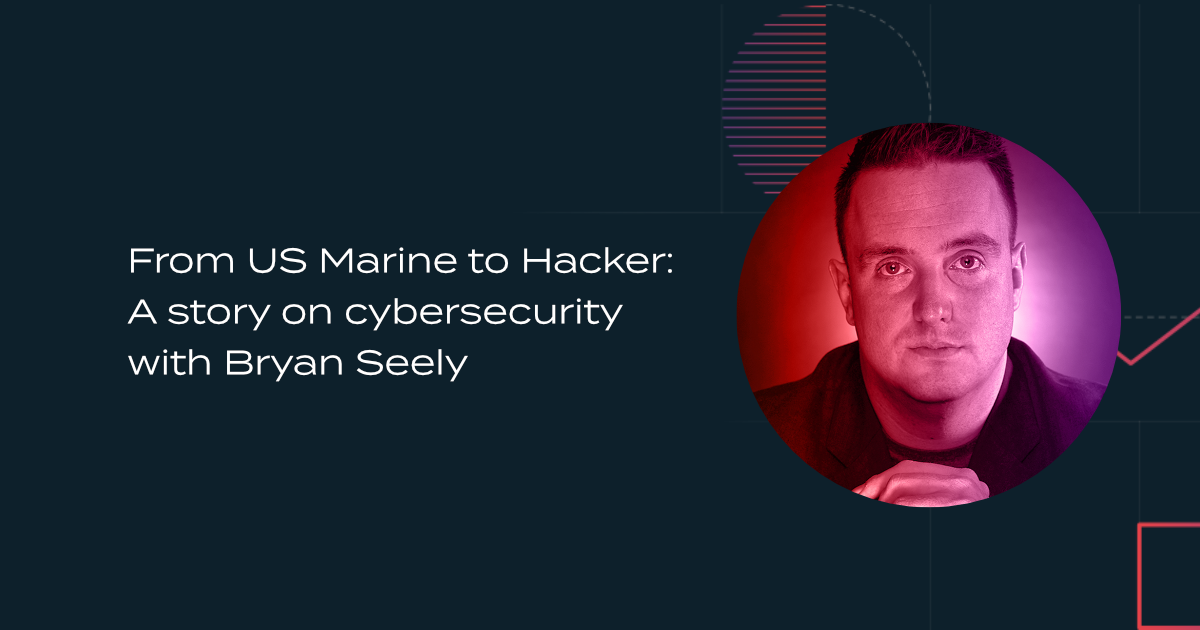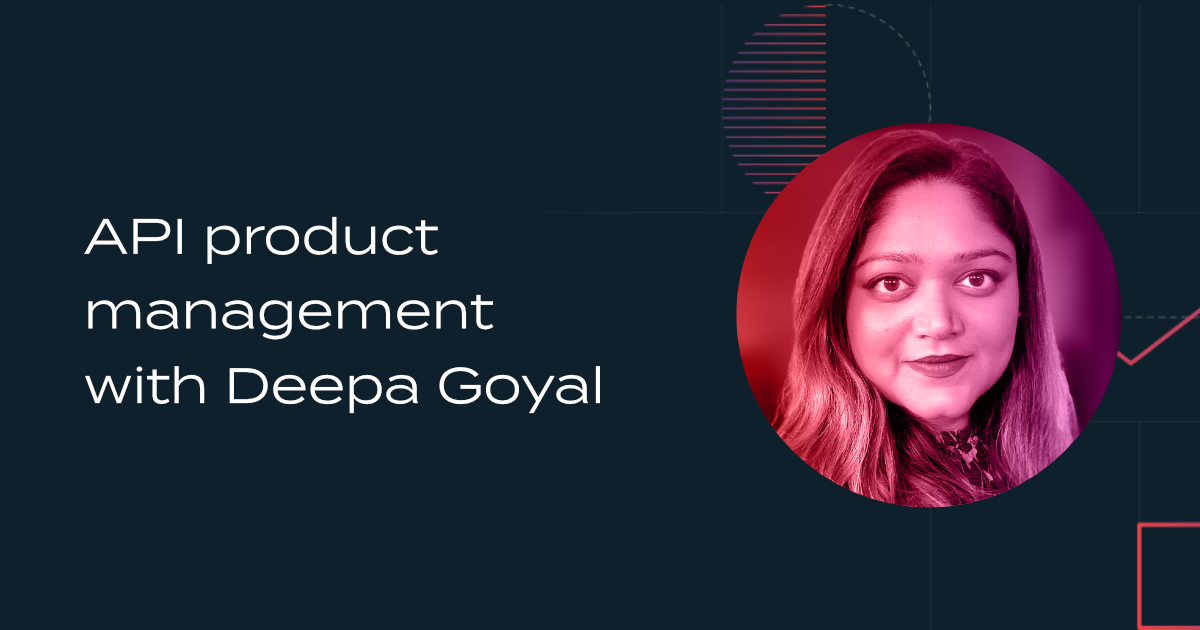
Companies often hold vast amounts of data in the various databases, legacy systems, and SaaS applications that they use. According to a 2020 article by Forbes on big data trends, nearly 36% of companies don’t use all the data they possess.
This data was labeled by Gartner as “dark data”, which is data a company collects but isn’t used.
Global market and intelligence firm IDC says that a company fails to use 90% of this data, and it's most likely because they don’t have the tools to capture and analyze it.
In this inaugural episode, we’ll explore the origins of Toro Cloud, how their story began, and the solutions that they’re offering medium sized enterprises who would like to start their digital transformation and data integration journey.
Episode outline:
- In this inaugural episode, we are joined by Toro Cloud’s CEO and founder, David Brown, and talk about how he founded the company.
- How do you make enterprise-class solutions, like iPaaS, accessible to mid-sized enterprises?
- Brown talks about the concept of low-code.
- Brown talks about digital transformation with Toro Cloud and where the company is headed towards.
- What is the pandemic’s impact on digital transformation?
Transcript
Kevin Montalbo: Hello, listeners! My name is Kevin Montalbo, the host for Coding Over Cocktails, and content editor for Toro Cloud - the company behind this podcast. Our company is an iPaaS provider with a low-code, API-centric platform for application integration, data management, API management, microservices, and workflow automation. We are glad to welcome you all to our very first episode and are happy that you are with us.
Our podcast series will focus on issues faced by enterprises as they manage the process of digital transformation. So please, sit back, relax, and enjoy. This first episode is about data integration in medium-sized enterprises. Cheers!
Holding vast amounts of data in various databases was one of the challenges David Brown was facing in 2010, who was implementing an enterprise class eCommerce solution at his own mid-sized enterprise.
David Brown:
We started out using our own in-house systems, so you know I came from a software development background. So we continued that process of writing our own software, But it was difficult and one of the challenges associated with running a business is you end up becoming a software company to run the business itself.
Kevin Montalbo
David is now the CEO of Toro Cloud - a company that enables the digital transformation of an enterprise, with solutions for application integration, API management, application development, and workflow automation. In this inaugural episode, we’ll explore the origins of Toro Cloud, how their story began, and the solutions that they’re offering to medium-sized enterprises who would like to start their digital transformation and data integration journey.
David joins us from Hong Kong.
So David, can you tell us what you were doing before all of this began? Did you specifically set out to establish an IT company when you were starting out?
David Brown
Yes, and no. Like, when we first started out, we were developing software and that was in the late 1990s. That was in Australia. We had a solution for a small business. It was a very popular solution and we had several hundred customers using our ecommerce solution. But then after the “.com” bust, we decided to deploy our own ecommerce website and so we kind of pivoted to being a retailer ourselves.
And that business grew really quickly. It actually went from 300 orders in its first month to 300 orders per day within 3 months. And within 3 years, we’re doing 3,000. It grew to the point where we really needed to deploy an enterprise-class software solution. So, we had over a hundred thousand products, we’re dealing with multiple currencies, we had three logistic centers around the world, and we were servicing different websites from different markets.
Kevin Montalbo
Can you tell us what you were using back then for that kind of challenge? Were you using a solution back then?
David Brown Sure. We started out using our own in-house systems. You know, I came from a software development background, so we continued that process of writing our own software. But it was difficult and one of the challenges associated with running a business is you end up becoming a software company to run the business itself.
Kevin Montalbo
For David to run his midsize enterprise successfully, they had to turn to enterprise-class solutions.
David Brown
A mid-sized enterprise has the same complexity of a large enterprise, but needs to be able to self-evaluate.
So, in our case we were selling products online. But instead of focusing on the best way to sell those products online, we were focusing on software development to facilitate selling those products online. So, that’s why we went out to market to see if we could get best-practice or industry-leading software platforms to take us to the next level. That’s where my experience came with deploying enterprise-class solutions because they weren’t really designed for a mid-sized enterprise.
Mid-sized enterprise is defined as anything between 50 and a billion dollars in revenues, or it could be a number of employees, a hundred or more employees. And so, we were kind of in that category of business and in a mid-sized enterprise, you don’t really have the resources of a large enterprise to procure and deploy enterprise-class software.
A large enterprise may have a floor of systems integrators and developers. They can do specialized training over large periods of time and have projects which could last years to deploy enterprise-class software. A mid-sized enterprise has the same complexity of a large enterprise, but needs to be able to self-evaluate. It’s gotta learn quickly, deploy quickly. They need solutions which are accessible, something they can try before they buy. All these types of things that sort of developed the passion for me for creating enterprise-class software which was accessible.
Kevin Montalbo
Yeah. From this, can you describe the iPaaS and data integration scene? Because you were needing these kinds of solutions for your mid-class enterprise. So, what was the iPaaS scene like when you were starting out?
David Brown
Well, it was just developing. I mean, the application and data integration space is not new. The early companies in this space such as TIBCO, Informatica, and webMethods - they were formed in the early 1990s. And then in the two thousands, open source solutions such as MuleSoft and Talend emerged. But up to this point, the solutions were largely on premise: you would buy and deploy a large, monolithic on premise system. The data integration itself revolved around protocols like XML, RPC and SOAP. XML was the data-formative choice at those times.
And then in the 2010s, Dell Boomi was really the first to emerge with iPaaS. Now, the difference with an iPaaS is that it's a fully managed online service. You can just log in with a web browser and create all of your integration, data transformations and even the deployment entirely through a web browser online.
It took a while for the rest of the legacy operators to catch up with this concept, even with slow-to-adopt emerging technologies, such as REST. Even today, some of those players still, really. Well, that's why they call themselves iPaaS. They really have on-premise systems where you would build integration, but they may have an online managed service for hosting the application, hosting the integration.
So, we have started our process of building an iPaaS in 2014. So we had the benefit of hindsight of how all of the industry was emerging and changing. And so, we're able to catch up with existing standards such as REST and emerging standards such as OpenAPI from day one and consider integration-platform-as-a-service as a deployment model, as well as on-premise. There's still a place for on-premise.
There's a lot of deployments behind an enterprise firewall where you want an integration system connected directly to, for example, a legacy database. And it may be exposed as a RESTful API so that other systems can consume it. So, there's a place for both. Toro was able to leverage all these trends towards iPaaS, REST, OpenAPI, and we're able to put on top of those trends emerging and innovative standards like microservices and a low-code development platform, and the like.
Kevin Montalbo
At this point now, at this point in your story, Toro is now existing, right? So, how did you come up with the Toro brand?
David Brown
Well, I mean, like a lot of brands, they evolve. And our brand when we first started, it was an acronym. We were looking at providing solutions. Being an online retailer ourselves, we were looking at providing “Turnkey solutions for Online Retail Operations”. So, it was an acronym for that purpose. But actually, the product we started to build, we knew had a much broader focus than purely online retail and solved the digital transformation requirements of enterprise in any industry.
And so, we've never used the acronym, but it's always been Toro as a brand. Then, when we launched the iPaaS platform, we changed our name to Toro Cloud. So instead of becoming just Toro, we actually started out as “Torocloud.io” as our domain name. [Then] it became “Torocloud.com.”
Kevin Montalbo
Yeah. So, it was never because you were a Taurus? It was never because of your Zodiac sign?
David Brown
No, no. Toro wasn’t my Zodiac. I’m an Aquarius.
Kevin Montalbo
Alright, okay.
With Toro now established, David and his team had his sights set on creating a low-code solution that would be ideal for mid-sized enterprises who usually faced the same problems that large scale organisations had, but without the huge resources and manpower.
Kevin Montalbo
So, now that Toro Cloud is here, what problem did you tackle first on your Toro Cloud platform?
David Brown
...low-code doesn't mean no code. Low-code provides the building blocks for building your application, your integration or your data management.
Well, when we first started developing a solution, we strived to create a low-code solution. So, mid-sized enterprises need something which is accessible. So, that has a number of different requirements. So, being accessible means that they need to be able to self-evaluate. You should be able to go to our website and discover what it does, download and try it. Or log in and try it. Pricing should be transparent, accessible. Tutorials, and documentation, that also should be accessible to learn, understand, use, and deploy.
And so we started out from day one trying to build a low-code solution. Now what does low-code mean? Well, low-code doesn't mean no code. Low-code provides the building blocks for building your application, your integration or your data management. You can still code when you need it. You see, enterprise integration requirements are complex. So low-code can normally get you so far.
In our case, we developed a low-code framework called “Gloop.” Gloop is a visual declarative language that reduces 99% of the code you need to build an integration service, logic, data management, APIs and workflows. It still gives you that flexibility of that remaining 1%. That 1% is critical because it's what differentiates enterprise flexibility and complexity. And so you can still write a script in a language of your choice. You can use Groovy or JavaScript, Python, Kotlin - where it's needed. But the low-code visual declarative language is like Lego blocks, that you can drag and drop to get 99% of the grunt work done without writing a single line of code.
Kevin Montalbo
Are we the first ones to do this? This kind of drag-and-drop, Lego block architecture for building code?
David Brown
Low-code, as a concept, has been around for a while. But when it first started out, it was very, very basic. So, for consuming data, for example, you might develop the connection to your database and it would visualize a table in that database as a web page, as HTML. But there was really no sort of interaction with that table. There was no logic behind it. It just represented the data.
And so, when we were investigating low-code solutions, when we started out, they were the predominant ones. It's evolved. This industry is a buzzword now, and it's evolved quickly, and there are some major players in the space. But we decided early on, given our target market, that we wanted a low-code platform.
So, that's where we started and that's where we focused. And we built a very strong platform specialising in certain domains. So, our low-code platform is very, very good for building integration service, logic and APIs, and managing data and the transformation of that data, building event-based workflows and business process automation.
These are the domains where our low-code platform excels.
Kevin Montalbo
So, you said that you started out in this low-code mentality, creating low-code solutions for businesses. Where's the company now headed? What are the problems that the company is trying to solve right now?
David Brown
...they can transform their business from an industrial age company into a digital age company.
Well, the company is really a platform for digital transformation and digital transformation again is another buzzword, but it means different things to different people. So, it's often discussed at a boardroom level and a boardroom level discussion may be very, very different from someone working within the company.
So, at a board level, they might be looking at creating operational efficiencies. So how can we make our business more productive through automation? But, they could also be talking about creating new digital products in a digital, API economy. So they take their existing business processes and knowledge and create digital products out of that. And they can transform their business from an industrial age company into a digital age company.
Now, to other members of the organisations - so for example, a marketing executive - they could be looking at digital transformation just within their domain, their department. So, they may want to integrate their CRM system with their online store, their e-commerce, or their billing systems. They might have met multiple marketing campaigns being managed through offline and online systems. They may want a single customer view across all of those systems. To them, to a marketing executive, that's what digital transformation may mean.
So, regardless of what you are trying to achieve, there are certain mechanisms to achieve that. And so Toro Cloud facilitates digital transformation to all of the stakeholders through a platform that enables integration, low-code application development, their workflow automation, API management, and we're going to continue to extend this framework. And then we'll take this framework here to make it easier to use, more and more accessible. We’ll facilitate integration and data management and APIs to full-blown application development.
So, not only the backend of the service creation and exposing those services as APIs, but also the front end in a visual mechanism for low-code mechanism for dragging and dropping the front end of the application, as well as the full lifecycle of the API management itself.
So, it becomes a platform, really, for digital transformation, whether your objective is creating a new digital company with new digital products with a new digital economy, or simply automating processes, or getting a single view across the organisation across all of the applications and data processes and systems. So that's where we are and that's where we're going.
Kevin Montalbo
Yeah. So right now, as we're talking, we're currently in the middle of a global pandemic. How do you see digital transformation’s role in this global pandemic that we are in right now?
David Brown
Well, it's obviously accelerated the shift to online services. The shift was already in place before the pandemic. It just really accelerated it because overnight we had everyone working remotely, even in our own organisation. We had to, within half an hour, enable everyone to work from home the next day because we were given half an hour's notice that the area was going to be put into lockdown. So, we were quickly handing out computers and laptops and monitors and Macs to every employee so they could work from home.
Now, being a software company offering digital transformation solutions, we were already well-placed to work remotely, and our systems were largely online. Our processes were largely online. Our collaboration tools were all online. And so it was really an easy shift for us. But for a lot of companies, this requires large-scale, digital transformation efforts to facilitate remote working and the productivity requirements associated with that.
The monitoring, management, it requires new processes, new integration to get remote views of online systems as well as on premise systems. So, it requires a large scale effort. All of the things that we've been doing for years, it's accelerating,
Kevin Montalbo
That’s our guest for today, David Brown, CEO and Founder at Toro Cloud. In our next episode, we'll look at the API-First design, how APIs shape our world. and how your organisation can utilize this methodology to supercharge adoption of your APIs.
The first three episodes of this podcast are now available for streaming or download. Make sure to check them out and subscribe or follow us on whatever podcast platform you're listening to, and visit our website at
www.torocloud.com. We’re also on Facebook, LinkedIn, YouTube, Twitter, and Instagram. Just look for "Toro Cloud."
This has been Kevin Montalbo for Coding Over Cocktails.
Show notes:
- Toro Cloud
- David Brown on LinkedIn
- David Brown on Twitter
- Coding Over Cocktails











